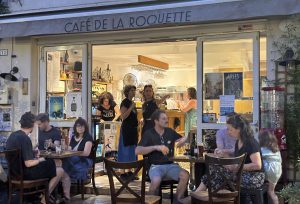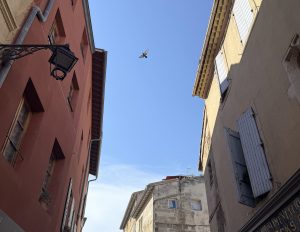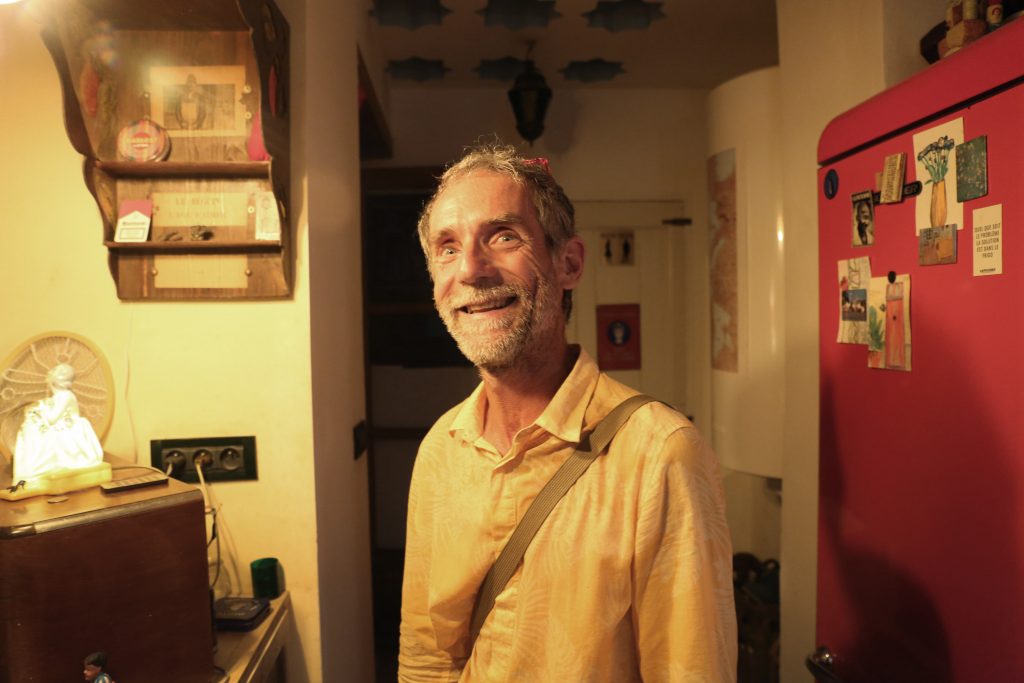
Milia Bonnici often takes advantage of shelter offered to people on the Chemin de Compostelle.
Text and photos by Annika Trost
“It’s a way of knowing—for me, the only way,” says Milia Bonnici.
It’s a common sentiment expressed by people like Bonnici who are following the Chemin de Compostelle through Arles.
Arles is a city full of art, history and tradition. Tourists flock to its Roman ruins and sites once frequented by Vincent van Gogh, but it is less commonly known as one of the most culturally dense stops along the Chemin de Compostelle, a trail that leads travelers across Europe on the Way of St. James to Santiago de Compostela Archcathedral Basilica, the cathedral of the apostle St. James in northwestern Spain.
Bonnici, a 60-year-old Italian, had been walking the trail for two months when I ran into him at L’Aubergine Rouge. I was there to see a bedroom decorated as the one in a Van Gogh painting but I was pleasantly surprised to find so much more.
The L’Aubergine Rouge is a bed-and-breakfast owned by Eric Gogin, who has been hosting people in Arles since 2017. He opens the door to Van Gogh enthusiasts, visiting tourists and pilgrims on the Chemin de Compostelle.
Upon my arrival at the colorful inn, I was welcomed by the sound of the bandoneon (which is similar to a concertina) and an acoustic guitar being played by two jolly travelers. The bandoneon filled the house with its rich tones and carried through the courtyard, up past the terrace, filling the neighborhood with a happy tune. Gogin offered me a seat and filled my glass with rosé and my plate with stuffed eggplant, his favorite food.
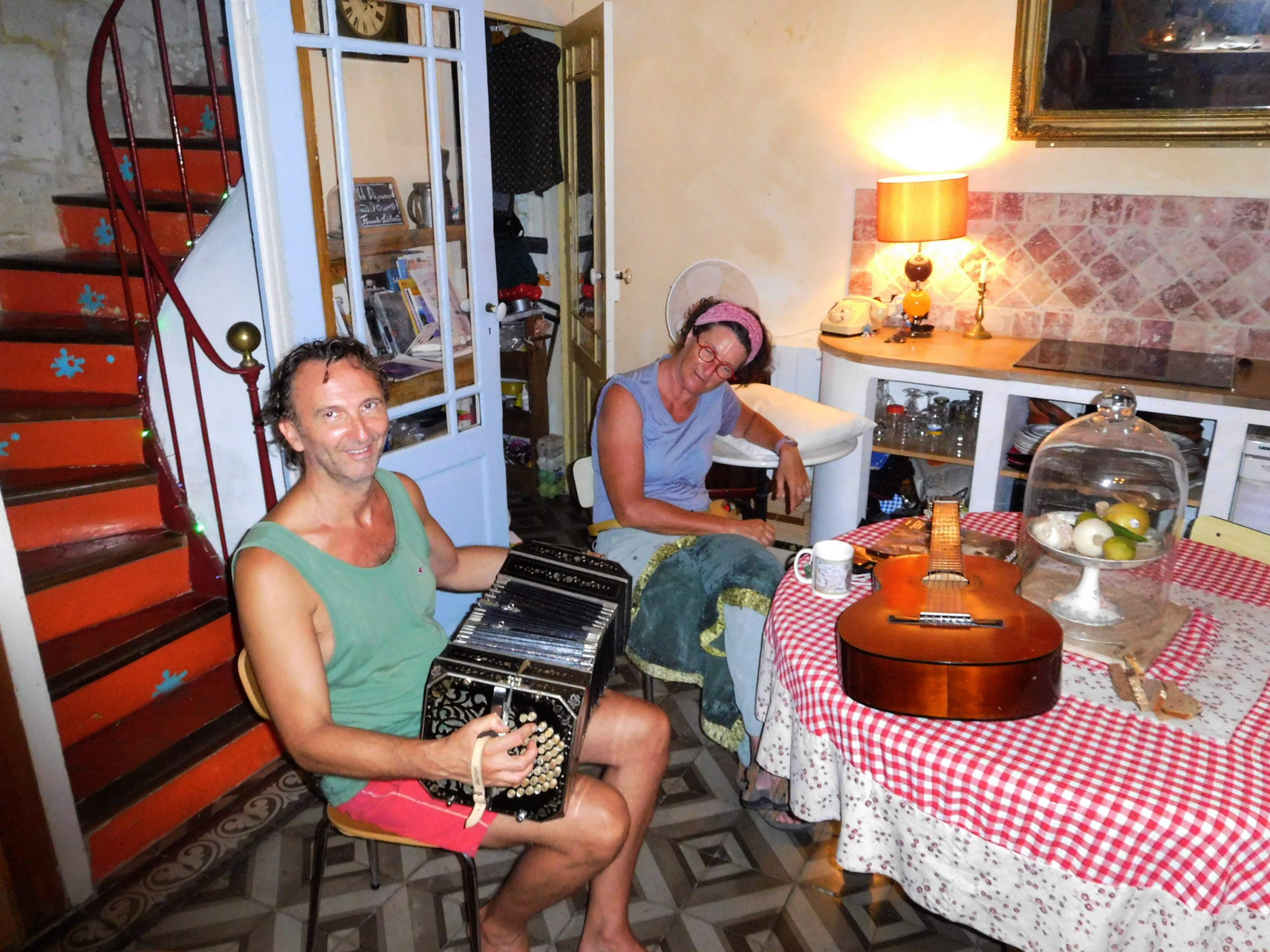
Gogin and his neighbor began to explain to me in French how pilgrims come through Arles and take refuge at the inn. With my little knowledge of the French language, I didn’t quite understand what they were saying until they pulled out a large map titled “Chemin de Compostelle.”
The trail in Spain stretches for about 478 miles from the city of Puente La Reina at the base of the French and Spanish border to Santiago de Compostela.
Although its primary sector is in Spain, the trail has a multitude of other starting points and passageways on which pilgrims trickle down from France, Italy, Croatia, Hungary, Germany and other parts of Europe.
“We are absolutely in the middle of this journey,” said Frédéric Imbert, 7th deputy mayor of Arles.
Arles is a common stopping place for pilgrims beginning in France, both because of its direct route to Puente La Reina, another important stop on the chemin, and because of its own historical significance.
“The Way of St. James via the Arles route is very popular,” said Antonella Quarta, the communications director at the office of tourism in Arles. “In fact, the Arles route is listed as Intangible Cultural Heritage by UNESCO.”
Pilgrims are instructed to pay homage to its Roman ruins and tombs at Alyscamps. They are also called upon to venerate several saints and to visit the churches or cemeteries that are dedicated to them.
Saint Genesius, a Roman civil servant, was buried in Alyscamps and Saint Trophimus, the first bishop of Arles, was buried there soon afterward.
“First of all, those who go to Santiago de Compostela by the route of Saint-Gilles must visit the body of Blessed Trophime, confessor, in Arles. …” states the Le Chemin d’Arles guidebook. “And in the cemetery of the same town, you should look for the relics of Saint Honorat. In its venerable and magnificent basilica lies the body of the most holy martyr Genest.”
The guidebook continues, “…from there, you have to go and visit the cemetery near Arles, in a place called Les Alyscamps, and intercede for the dead according to custom… it is a mile long and a mile wide. Nowhere else in any cemetery could you find so many marble tombs, nor such large ones, lined up on the ground…”
Not all who pass through Arles on the Chemin de Compostelle are paying religious homage. “I like pilgrims, but I myself am ‘viandante,’” said Bonnici, using an Italian and Spanish term for wanderer.
“It’s not a hike; it’s a social experience,” said Vincent Andre. “Two years ago, I walked for nine days.”
Andre began his Chemin de Compostelle journey in Arles. He stopped to take refuge at L’Aubergine Rouge for one night along the way. He came down from his home in the center of France to Arles by train and intended to travel 50 miles to Montpellier the next day.
Gogin often houses pilgrims in exchange for donations, as they usually come for a short time and often unexpectedly. He gives them hospitality and a place to rest their heads along the long journey, while providing them with necessary information to continue on the path.
“Sometimes I go into places like this, and they give me hospitality,” said Bonnici.
Gogin informed me of a shell that is a symbol of the trail, and also the red-and-blue swirling painting outside of the inn, which is another sign of refuge for those passing through.
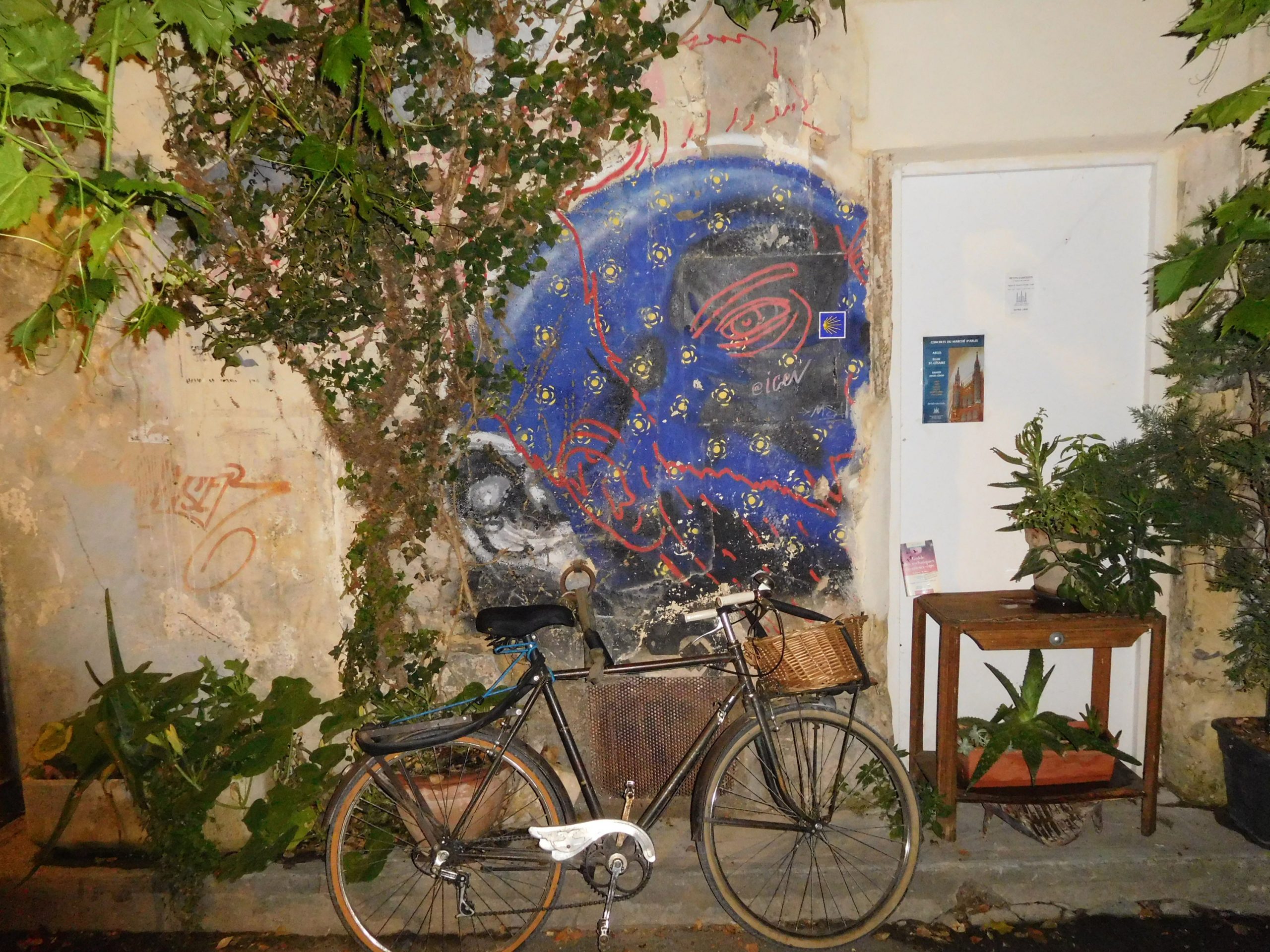
The yellow shell is the European emblem to show that you are on the Chemin de Compostelle, and yellow arrows also indicate the route through crossroads, according to the Arles tourism bureau.
If you gaze downward and look closely enough, you can see faint outlines of yellow shells painted in the pavement throughout the city.
I found some located near the Place de la République, some in the La Roquette neighborhood, some just before the Trinquetaille footbridge over the Rhône, and some on the lion statue at the beginning of the gravel trail.
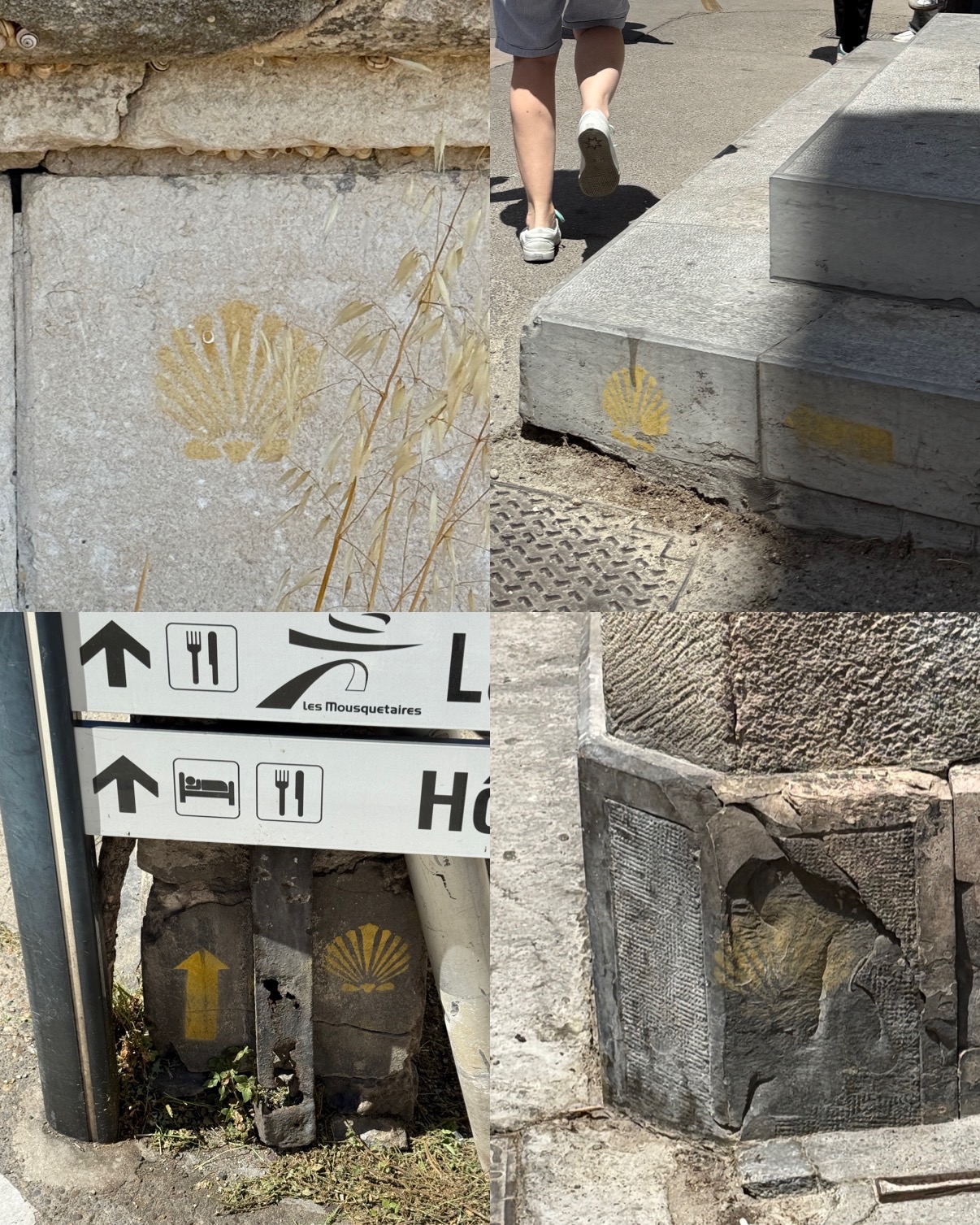
I’m amazed by the wonder of the hidden signals throughout this beautiful city, and it leaves me wondering, what other ancient history lies in the streets of this small town in southern France? What else can we learn from looking down and noticing the small things?
“I think in Arles we have a magnetism,” said Sara Guti, a cultural mediator at the Vincent van Gogh Foundation in Arles. “We’ve had a lot of important people coming to stay in Arles.”
Although I didn’t walk the trail myself, I feel compelled to come back some day to revisit the beauty of Arles and embark on my own journey down the path. God only knows who I’ll meet and what transformation I may encounter. It might just take me back to the evening at L’Aubergine Rouge.
